
Morocco Cooking tour
(08 Days / 07 Nights )
Our Morocco Cooking Tour will introduce you to one of the best cuisines in the world. In this trip, you will learn how to prepare some of the most delicious Moroccan dishes , and, at the same time, it is an opportunity for you to visit some of the most exotic places in the country. Our cooking adventure is a great way to experience firsthand the culture and the cooking traditions of the Moroccan people.
The Moroccan cuisine is widely knwon for a remarkable diversity of influences. As far as these influences are concerned, one can talk of a fusion of the cuisine of the Amazigh –the indigenous people– with the cuisines of the colonizers. The first of the colonizers to mention here are the Moors and the Jewish-Moors. As to their influence, both civilisations introduced olives, olive juice and citrus. They also left behind their sophisticated preserving techniques of some products like lemons, pickles, etc. The Ottoman Empire, though they did not invade Morocco, introduced barbeques (Kebbabs). The coming of the Arabs in the second half of the 08th century brought new spices, dried fruits, nuts and sweet and sour combinations. The French cuisine too had a direct influence on the Moroccan cuisine. In this sense, one can talk of the culture of cafes and pastries.
Concerning the Moroccan cabinet of spices, dried ginger, cumin, salt, black pepper and turmeric are the mixture found in almost every Moroccan dish. Cumin can be considered the most important spice and it is usually expected to be served on the table along with salt. Cinnamon is usually found in fruit salads, bisteeya and tagines. Tomato-based dishes, vegetable tagine and charmoula are usually spiced with paprika and sahara chiles. One of the most expensive spices in Morocco is Saffron. This spice is used in food, tea and as herbal medicine. Saffron is produced in the south of Morocco in a small town called Taliouine. In Morocco you will also find a mixture of 20 to 40 different spices known as Ras Alhanoot. In Fact, the Moroccan cuisine has all the means to be one of the most delicious cuisines around the world.
Welcome to Morocco to experience firsthand our wonderful cooking classes and cooking vacations!
Welcome to the Moroccan Cuisine!
Cities covered in this tour
-
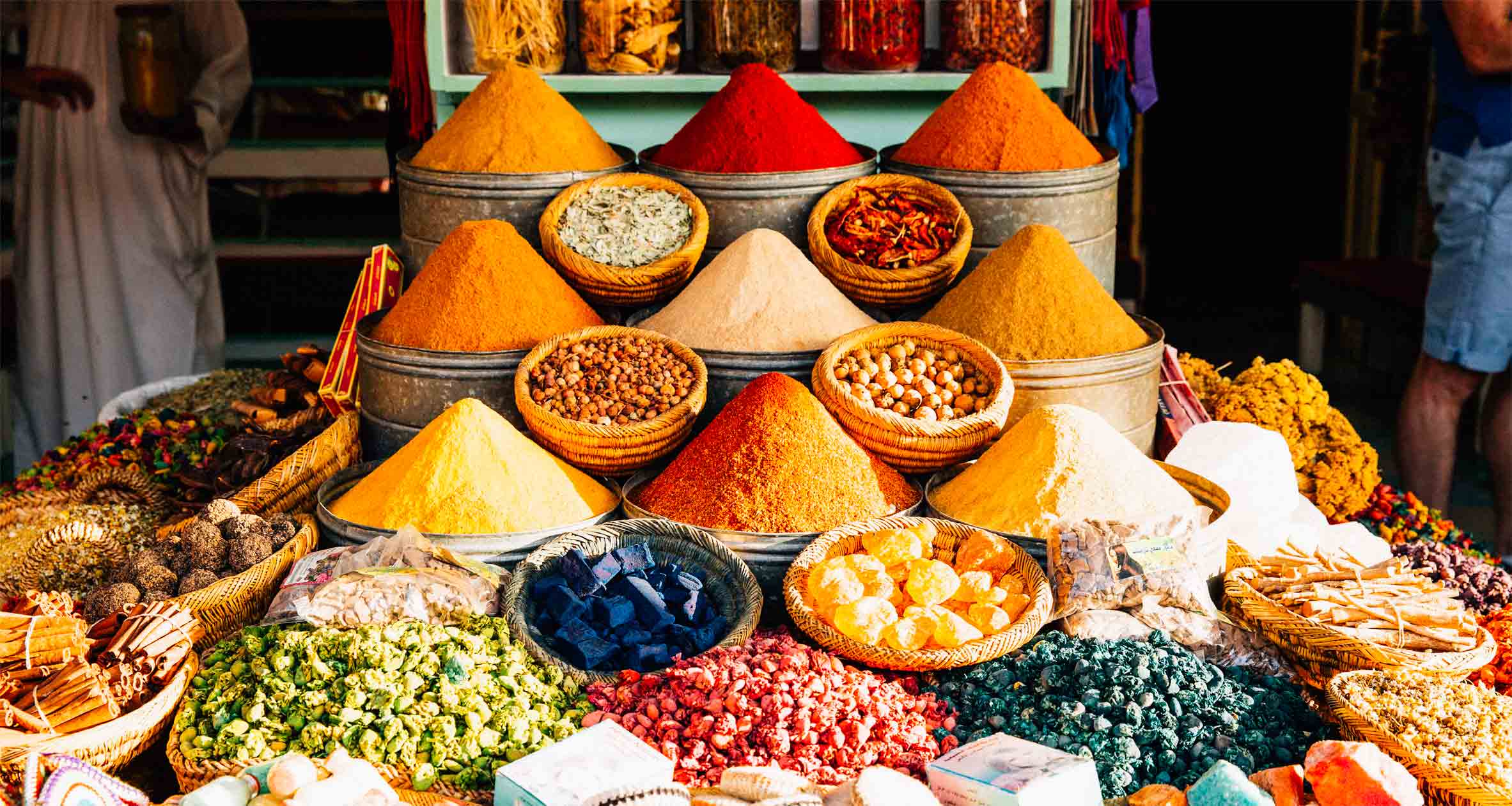 MOROCCO SPICES
MOROCCO SPICES -
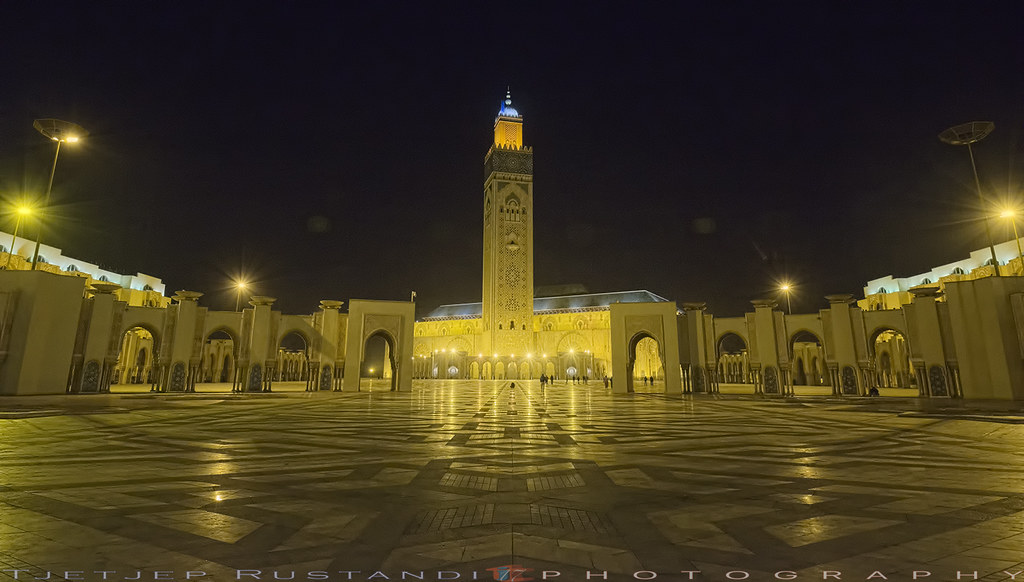 CASABLANCA
CASABLANCA -
 RABAT
RABAT -
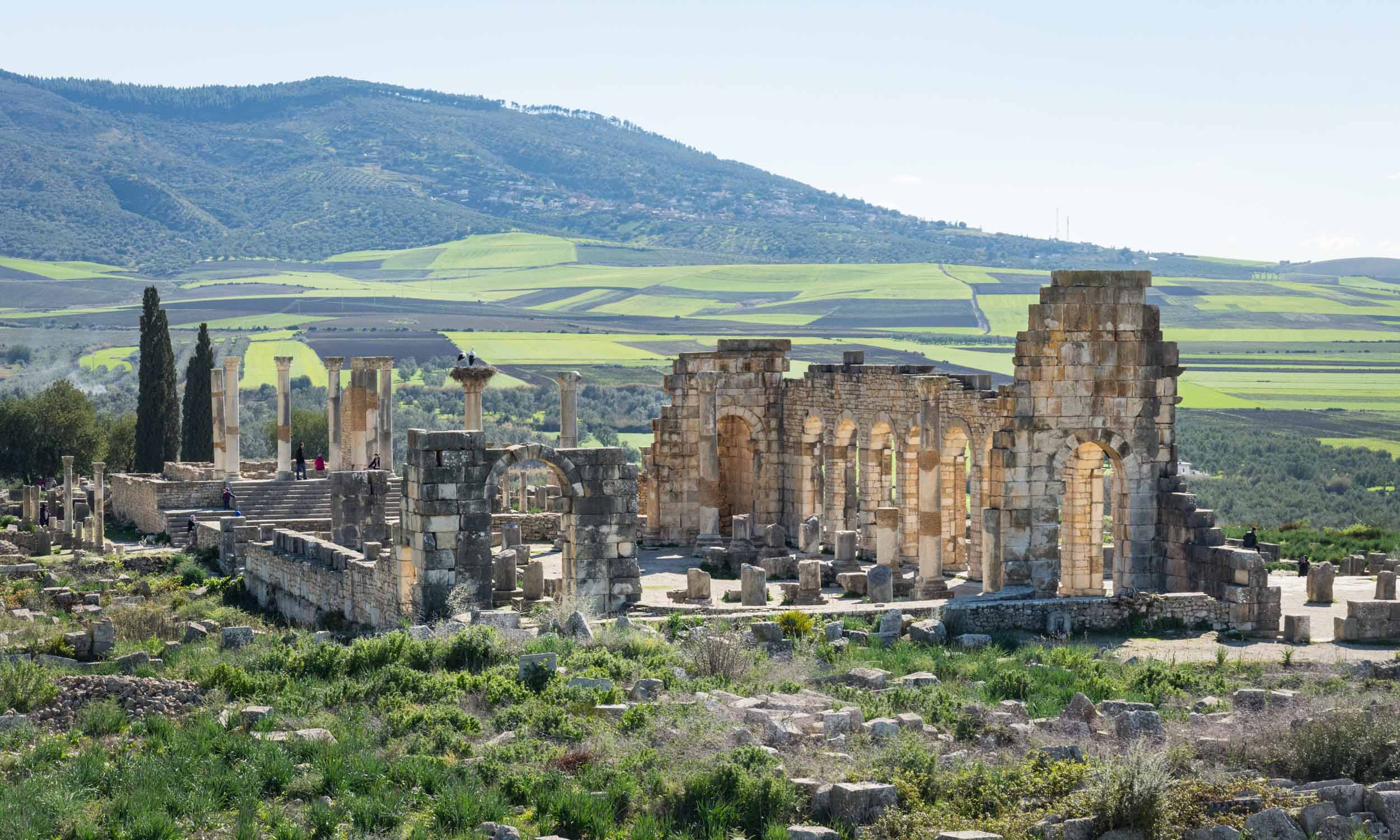 VOLUBILIS
VOLUBILIS -
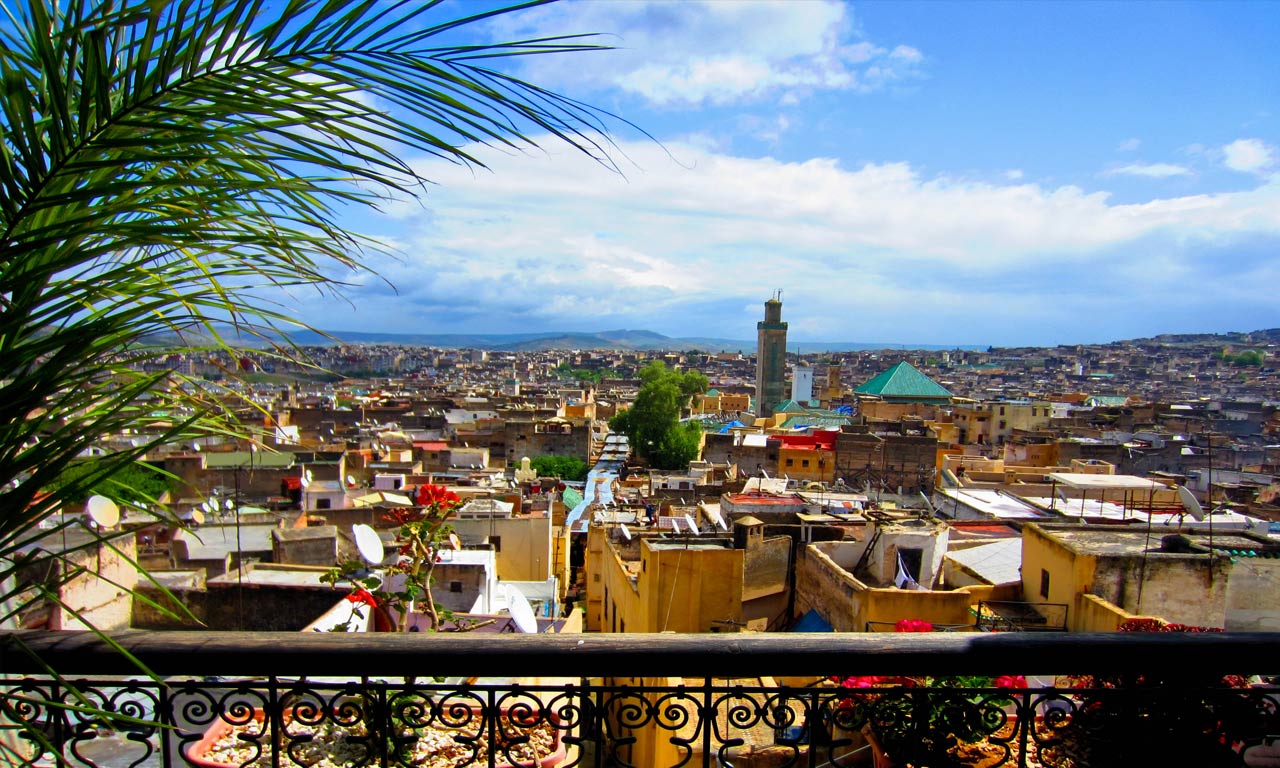 FES
FES -
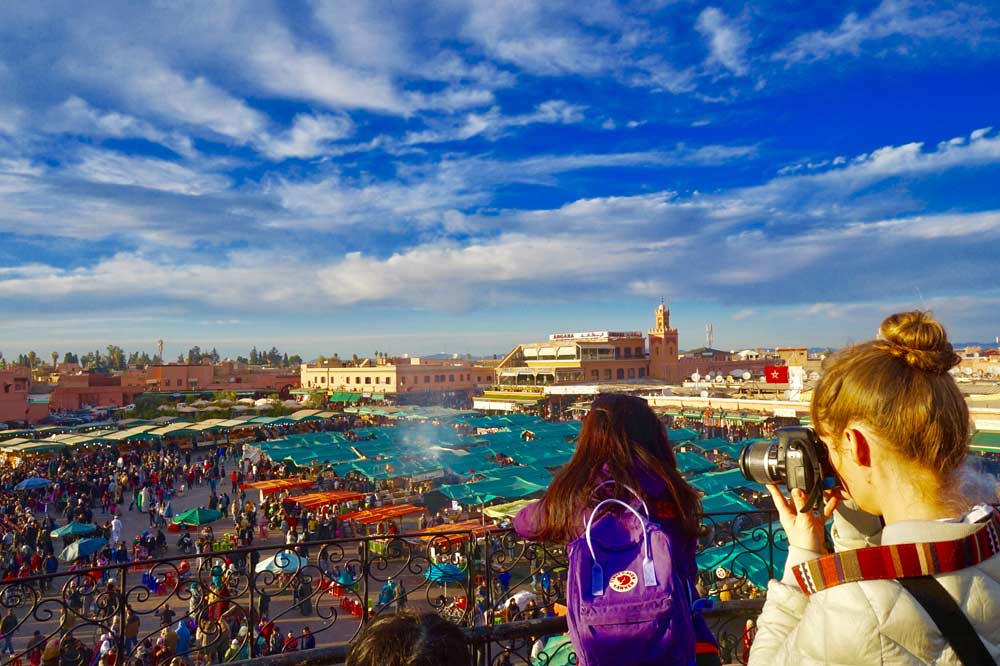 MARRAKECH
MARRAKECH -
 COOKING MARRAKECH
COOKING MARRAKECH
Detailed Itinerary:
Morocco cooking vacation is not like anything else! The trip is to a land of great history with hundreds of years of direct contact of many cultures and a very diverse cuisine that was the fruit of this contact. To name but a few, Amazigh (Berbers), Phoenician, Roman, Spaniard, Portuguese, Corsican, French, Moorish, Middle Eastern, Mediterranean and African cultures contributed all to the richness of this worldly recognized cuisine. Our culinary trip starts from Casablanca airport where our guide will meet you. General introduction of the trip by the guide followed by a short tour of the commercial center of Morocco and its largest city. Begin with an outside visit of Hassan II mosque. Continue to Ain Diab Corniche for a pleasant stroll along the coast. Transfer to Rabat, the capital of Morocco and one of the imperial cities. Enjoy an orientation tour that covers the entrance to the royal palace. Overnight in Rabat.
After breakfast, continue the city tour of Rabat. Stop first at the Kasbah of the Udayas, Rabat’s medina. This kasbah is a fortification constructed on a hill, overlooking the Atlantic Ocean. The Kasbah of the Udayas was constructed during the realm of the Almohads. Inside the Kasbah one can come across Andalusian gardens full of orange trees, flowers and palms. Continue to Mohammed V Mausoleum. This Mausoleum is home to the tombs of the current king’s grandfather, King Mohammed V, and his two sons King Hassan II and Prince Moulay Abdellah. Inside the mausoleum, mosaics rise from the marble floor to a ceiling of gold leaf and hand-carved cedar wood, while the three ground-floor tombs are carved from white onyx. Next to the Mausoleum, stop at Hassan Tower, which is the towering minaret of the Hassan Mosque. The construction of the site began in 1195. Transfer to Meknes, the fifth largest city of the kingdom. Meknes was the capital of Morocco under the reign of Moulay Ismail (1672–1727), before it was relocated to Marrakesh. The city tour of Meknes includes the massive Bab El Mansour gate. Stop to take pictures there. Enjoy an optional lunch at a local restaurant. The city tour of Meknes will include also the Harri Souani stables, the medina remparts, and the entrance to the Royal Palace. Continue along to the UNESCO-sponsored Roman ruins in Volubilis where you will have a guided tour. Transfer to Fes for overnight.
Enjoy the guided city tour of the spiritual capital of Morocco, Fes. The first stop of the morning is a visit to the entrance of the largest royal palace in Morocco. This palatial complex rests in the center of the Fes El-Jedid area and is surrounded by high walls with an intricate and elaborately decorated gateway that is permanently closed. The doors are bronze but they shine like gold. The next stop will be the old Medina (Fes el Bali). This medieval centre of Fez has not changed for centuries. Its narrow alleys house hundreds of merchants and craftsmen selling a range of products such as dates, fish, spices, copper urns and musical instruments. One of the most interesting sites in Fez is the Leather Souq and the oldest leather tannery in the world. The tannery dates back at least nine centuries. In the medina you will visit the Jamaa Al-Karaouine (the world’s first established university) and a Medersa (a Koranic school). Overnight in Fes.
Today, we will start our first culinary adventure. You will be escorted to the old medina to exercise your shopping demons in some of the most colorful souks (market) in Morocco. The trip to the souk is an amazing opportunity for you to experience the everyday rituals of food shopping for Moroccans. You will learn how to bargain to get the lowest price for the best ingredients of the menu to be cooked with your chef. The latter will decide on the ingredient, but, for sure, things like meat, vegetables and olives will not be missed. Inside the medina, you will also investigate traditional cooking methods by visiting a 400 years old Furan or a communal oven and bakery. While walking in the souks, you will get the chance to try some traditional Moroccan street food. The most well-known of this is Milwi, Harsha, pastries, etc. There will also be a stop at a Berber pharmacy where you will discover the world of spices and their uses. Once you finish your food shopping, you will return with your escort guide to the family home to start your cooking adventure. The cooking class focuses on some of Fes’s culinary specialties. The workshop is conducted by a local chef, and at the end of the workshop, you will have lunch on the meal you have prepared. Enjoy your afternoon at leisure. Overnight in Fes.
After breakfast, transfer to Marrakech. Stop first at Ifrane, a charming town and ski resort in the Middle Atlas region of Morocco. Ifrane is famous for its Alpine climate, European-style houses and its 1665 metres (5,460 ft) in elevation. The town experiences snow during winter months and a cool climate during summer. Ifrane is also the place where the lowest temperature was ever recorded in Africa, -24 °C in 1935. While in Ifrane, expect to find animals like the threatened Barbary Macaque and local tree species such as the native Atlas cedar, Scrub oak and the introduced London plane. We will then move on to Benni Mellal for an optional lunch stop. Continue to Marrakech for overnight.
Enjoy a morning orientation tour of Marrakech. The tour begins with a visit to the Kotoubia Mosque, the largest mosque in Marrakech, and one of the oldest mosques in Morocco. The minaret, 77 metres (253 ft) in height, includes a spire and orbs. It was completed under the reign of the Almohad Caliph Yaqub al-Mansur (1184 to 1199), and has inspired other buildings such as the Giralda of Seville and the Hassan Towerof Rabat. Continue to the world-famous Jemaa el Fna Square, which houses an array of food, snake charmers, local musicians, and fortune-tellers. There’s nowhere on Earth like the Jemaa el Fna, the square at the heart of old Marrakesh. Your next stop is the Bahia Palace, and the Saadian Tombs. The Saadian tombs in Marrakech date back from the time of the sultan Ahmad al-Mansur (1578-1603). The tombs were discovered in 1917 and were restored by the Beaux-arts service. The mausoleum comprises the interments of about sixty members of the Saadi Dynasty that originated in the valley of the Draa River.
In the afternoon, enjoy a guided cooking workshop conducted by a Moroccan cook or a chef. The participants will work alongside a translator, using easy-to-use modern equipment found in everyday kitchens. At the end of the workshop, you will dine on the meal you prepared. At a typical half-day workshop, one learns to prepare an appetizer and a main dish, or a main dish and dessert. Overnight in Marrakech.
After breakfast, enjoy a full day trip to Essaouira, where you will spend most of the day at leisure. This relatively small, easily navigable beach city has got a distinct multicultural feel, resulting from the large Portuguese, French, and Jewish populations that once called it home. Its mild climate and expansive stretches of ocean sand also place it among Morocco’s top beach towns. Essaouira’s walled medina was added to Unesco’s World Heritage list in 2001. Its well-preserved, late-18th-century fortified layout is a prime example of European military architecture in North Africa. For the visitor, the mellow atmosphere, narrow winding streets lined with colourful shops, whitewashed houses and heavy old wooden doors make it a wonderful place to stroll. On the way to Essaouira, we will stop at an Argan oil cooperative to discover how this precious oil is extracted. Late in the afternoon, return to Marrakech for overnight.
t
After breakfast, transfer from Marrakech to Casablanca airport for your return flight.
– Accommodation in double /twin / single rooms.
– Breakfast daily in the hotel
– Modern A/C vehicle during the tour
– English speaking driver/guide
– Local guides in Volubilis, Fes & Marrakech
– Cooking classes in Fes & Marrakech
– Entrance fees to monuments
– Porterage at airport and hotels
– All taxes
– Any services not mentioned in the program
– Tips & porterage
– Beverages
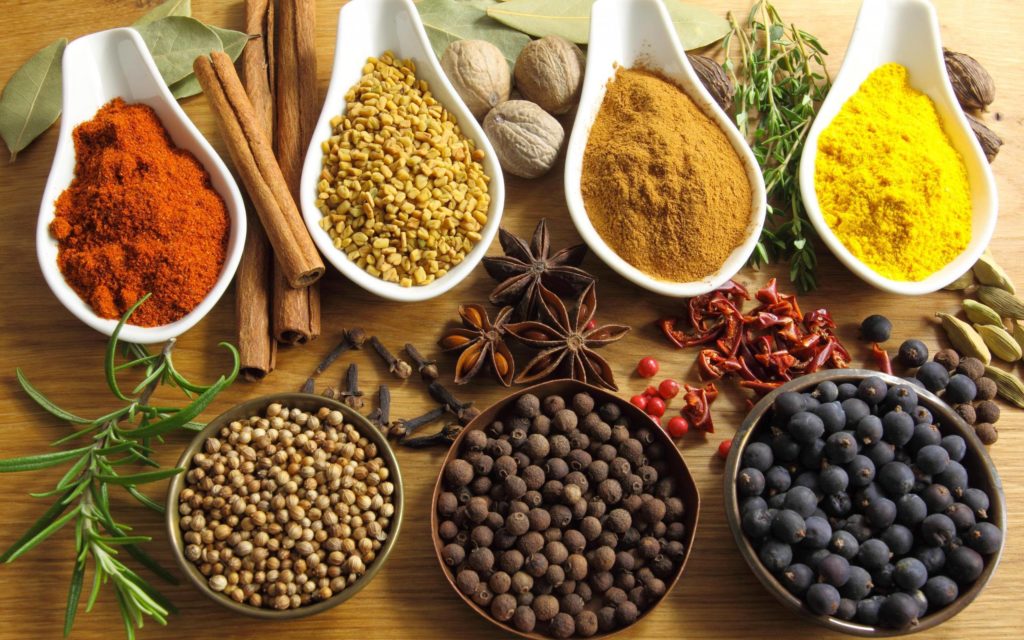

No Surprises !
